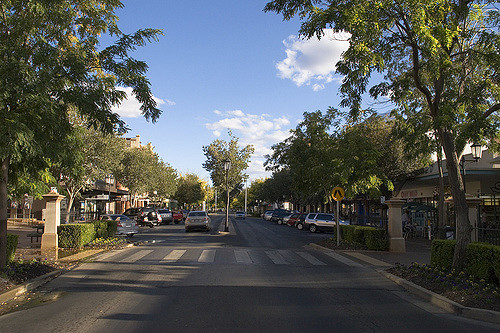There is a growing cacophony of calls for a national settlement strategy. What does that mean? Are we all over the exhaustion of daily congestion? Are we fed up with promises of infrastructure that fails to catch up with the growth of our cities? Is it about migrants and the number of those apparently crowding our cities? Or is it about a regional economic growth plan that guides new investment to places in Australia that want and need it?
This week the Planning Institute of Australia launched its most recent report, Through the lens – the tipping point at Parliament House. It joins a recent report by the Standing Committee on Infrastructure, Transport and Cities, Building Up and Moving Out, to advocate for a national settlement strategy. Both reports argue that it is time to look differently at how Australia will accommodate future population growth.
Continuing as we have been doing, and allowing unmanaged growth to settle in our big cities is already diminishing our valued way of life. The debate may turn ugly if we don’t address these issues soon.
For some commentators, the only response to untrammelled growth is to stop it. The debate in Australia has frequently fallen back to that solution. Bob Carr, when premier, famously announced that Sydney was full and closed for new migrants. Even current premier Gladys Berejeklian has said “we need to take a breath” on such high numbers of migrants.
Migrants critical to tax base to pay for health care and pensions
What we don’t talk about is how critical the taxation paid by new migrants is to government revenue needed to support an ageing population with health care and pensions. So the conversation should not be “no more migrants” but should be where can our population and new jobs be located in order to retain the liveability of our big cities?
Recent political discussion has raised the option of “forcing” migrants to settle in small centres away from the big cities.
Last year 140,000 new settlers arrived in Sydney. Even if half of them were encouraged to settle elsewhere, that still leaves a large number adding to the growth of Sydney.
And 70,000 new settlers are unlikely to find employment in small inland centres without a significant program of employment development in those centres.
And there’s the challenge, a vicious circle: settlers won’t happily go elsewhere without prospective jobs and jobs won’t go elsewhere without the potential of skilled employees.
There’s another challenge with settling small towns. Work recently completed in the Orana region (Dubbo and surrounds) found that basic facilities were needed to make that centre settler ready. Priority issues were telecommunication connectivity, adequate hospital facilities, water for industry, road upgrades to get produce to market, and connectivity with Sydney.
And the business case for supporting funding of those facilities is unable to compete with big city priorities due to the small number of businesses and residents benefiting. The very model built by Treasury is stacked against the small out of big city centres development.
If we all agree that the settlement of small towns and centres must be supported in order to relieve the population growth pressures in our major cities, then we need to shift priorities and help make those towns settler ready.
It’s not about where but how
The Standing Committee’s report and the PIA report released this week call for a sensible discussion around a national settlement strategy. Both the Prime Minister and the Opposition Leader have flagged their partial support for such an idea. But, given the issues highlighted above, it’s not about where, it’s about how.
To make small towns settler ready significant investment in all kinds of infrastructure is needed and a program of incentives to encourage businesses and industry to relocate and to grow must be undertaken.
This can be matched with settlers from our migrant intake and our existing residents who wish more affordable housing, and a great community lifestyle. But to tie all that together, we need to create much better access between those centres and the big city. Nothing will transform that access better than a fast train service for both freight and passengers.
Forcing any of our population to head away from the big city is doomed to failure. We must add quite a big carrot to the stick. It must have bi-partisan support to give business the long term confidence to locate and to create more jobs.
And it must be supported with essential services and a fast train link back to the markets and ports in the big cities and to families and entertainment back in the city.
The sense of community and affordable lifestyles in smaller towns are often significantly better than in the big cities. But they must be supported by essential services, jobs and fast links back to the big smoke.
We need a national settlement strategy, but we need that strategy to focus on “how” not “where”. And we need it as soon as possible before the debate focuses on all the wrong issues.


No Comments so far ↓
There are no comments yet...Kick things off by filling out the form below.